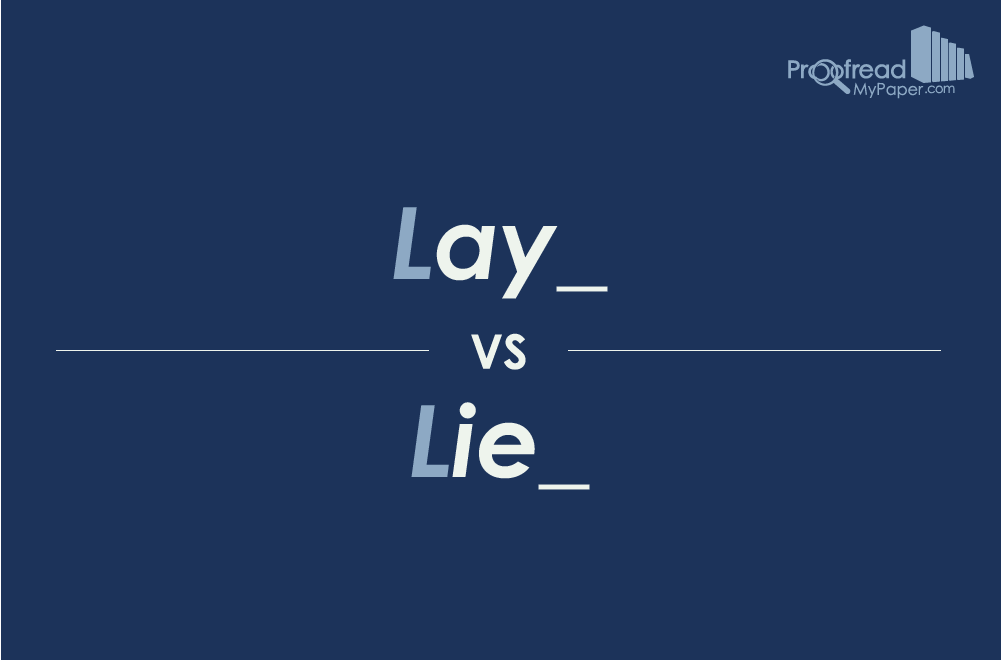Are there any two words more commonly confused than “lay” and “lie”? It’s hard to think of many others where mistakes are so easy to understand, since “lay” and “lie” are distinct terms with different meanings, yet the simple past tense of “lie” is also “lay.”
Nevertheless, by the end of this blog post, using our proofreading experience, we fully intend to have explained the difference between “lay” and “lie” in clear and simple terms. Wish us luck.
Lie (Recline)
The sense of “lie” that causes most confusion is its use as a verb meaning “to recline or be in a horizontal position”:
Trying to understand this word is tiring, so I will lie down on the couch.
An important factor is that “lie” is an intransitive verb, so never takes an object.
This particular use of “lie” is an irregular verb, moreover, so the simple past tense is “lay”:
I felt refreshed immediately after I lay down.
Meanwhile, the past participle (used in the present and past perfect tenses) of “lie” is “lain”:
The couch was so soft, I could have lain there forever.
Lay (Put Down)
As a present tense verb in its own right, “lay” means “to put something down or place it horizontally”:
Joan lay down her sword; she could take on this chump barehanded.
The simple past tense and past participle of “lay” are both “laid”:
The next day, Joan laid out a map and planned her next campaign.
The examples above also demonstrate how “lay” always takes an object (i.e., the subject is always putting something else down).
Another Type of Lie (Speak an Untruth)
It’s worth noting that “lie” has another common definition, meaning “to say something untrue”:
He couldn’t let her know the truth, so he lied and blamed the zookeeper.
As you can see above, the past tense of “lie” is “lied.” As well as a verb, “lie” can be used as a noun meaning “an untruth.”
Lie or Lay?
The key thing is to remember that “lie” does not take an object, whereas “lay” always does.
Find this useful?
Subscribe to our newsletter and get writing tips from our editors straight to your inbox.
If the subject of your sentence is reclining or horizontal, the correct term is “lie”: e.g., “The wrecked ship lies on the seabed.” This becomes “lay” in the simple past tense or “lain” as a past participle.
However, if the subject of your sentence is putting something else down, the correct term will be “lay”: e.g., “The new policies require laying many miles of pipeline.” The past tense is always “laid.”
Variations of “lie,” “lay” and “lie” (the other kind) can be found in the table below.
|
Present Tense |
Lie (Recline) |
Lay (Put Down) |
Lie (Speak an Untruth) |
|
Past Simple |
Lay |
Laid |
Lied |
|
Past Participle |
Lain |
Laid |
Lied |
